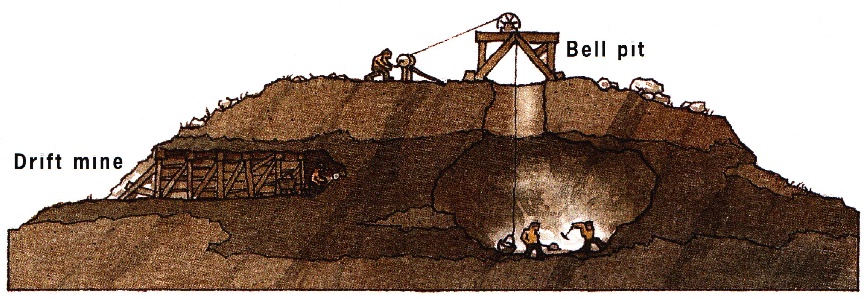
Mining Coal

Introduction
Although apart from the vital innovation of steam-engine pumping there were no technological inventions in the mining of coal, coal mines did change substantially 1700-1900.

Most mines before 1750 were drift mines (left), or shallow 'bell pits' (right).
After you have studied this webpage, answer the question sheet by clicking on the 'Time to Work' icon at the top of the page.
Links:
The following websites will help you research further:
Coal
Mining:
Day in
a miner's life 1911
Movietone News 1930s?
British Pathι 1950s
A Miners Day sequence of photographs
The Felling Coal Mine Disaster:
1 A Coal Mine in the early 19th Century
During the Industrial Revolution coal mines were worked by the 'board and pillar' method. Long tunnels called boards were cut out of the coal seam, leaving pillars of coal to hold up the roof.
The main shaft which the miners went up and down and the coal came up was called the downcast shaft.
To try to prevent explosions, mine owners ventilated the mines by digging a second shaft called the upcast shaft. At the bottom of the upcast was a large fire, and the hot air rising from the fire pulled air down the downcast shaft and through the workings; a wind-vane ensured that a gust of air never blew down the upcast shaft and sent the fire blazing into the mine.
Walls called stoppings were built to force the air to travel through all the workings. If trucks needed to pass along a board where there was a stopping, a door was built, and a child was employed to keep the door shut, opening it only when the coal trucks went through .
